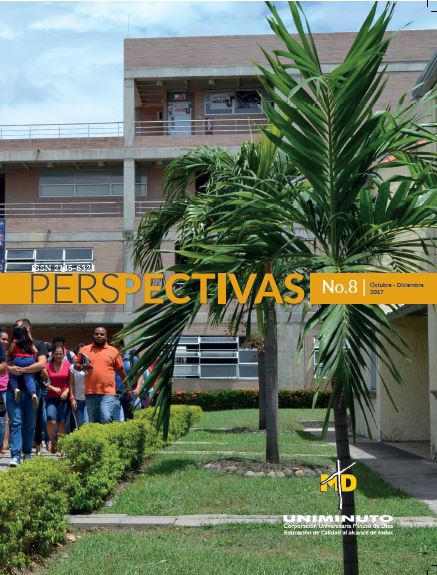La influencia de las Tic en el proceso de aprendizaje de los estudiantes a distancia. estado del arte
Article Sidebar
How to Cite
Article Details
Main Article Content
Abstract
Abstract “Infants for their rights “, as a seedbed of researchers in the province of Tequendama, aims to develop a research process, focused on the consolidation of strategies, to improve the use of ICT in the learning processes of online students from the Corporación Educativa Minuto de Dios - UNIMINUTO from La Mesa (Cundinamarca). First of all, a diagnosis was made, establishing the guidelines for the continuity of the research proposal, by identifying the different problems in terms of the appropriate management of technology and the technical tools to which students have access to the search, analysis and information processing, in different learning environments. Secondly, it was pertinent to build a state of the art that establishes the different contributions of the consulted texts, allowing the advance of research.
In this way, theoretical conceptions (from the heuristic and hermeneutic) were taken into account for the methodological development (planning and construction) of the present state of art. This is how, it was possible to carry out the study of nine sources that approach the topic to be treated. In this way, it was taken into account: authors, place, objectives, methodology used and conclusions, to specify the most significant contributions. These can be consolidated in the need that the learner learns to build their own learning environments, achieve the proper use of social networks in terms of learning, and improve knowledge about the use of mobile technology and the constant evaluation process of computer resources used by students. Therefore, it is imperative to establish to what extent the student at a distance, is really prepared to accomplish the requirements (technical-disposition of time-use of software) to learn under this modality.
References
aprendizaje_academico_ basado_en_ las_Redes _Sociales_o_SN-_ Learning.
Londoño, P.O., Maldonado, G. L., & Calderón, V.L. (2017). Guía para construir estados de arte. Recuperado de http://www.colombiaaprende.edu.co/ html/investigadores/1609/articles-322806_recurso_1.pdf.
Martínez, M.E., & Raposo, M. (2006). Las tic en manos de los estudiantes universitarios. Revista Latinoamericana de Tecnología Educativa, 5(2), 165-176. Recuperado de http://relatec.unex. es/article/view/235/221.
Molina, N. (2005). ¿Qué es el estado del arte?, Ciencia y tecnología para salud visual y ocular, 5, 73-75. Recuperado de https://revistas.lasalle.edu.co/ index.php/sv/article/view/1666/1542.
Moreno, P., & Suárez, J. (2010). Las TIC como apoyo a la interacción entre estudiantes y docentes en el desarrollo de las prácticas profesionales en la facultad de educación de UNIMINUTO (Tesis). UNIMINUTO, Bogotá. Recuperado de http://repository. uniminuto.edu:8080/xmlui /handle/10656/815.
Neri, et al. (2011). Bienes de Conocimientos, Bienes de Consumo. Usos de las TICS en estudiantesuniversitarios, III Congreso Internacional de Investigación y Práctica Profesional en Psicología, XVIII Jornadas de Investigación, Séptimo Encuentro de Investigadores en Psicología del MERCOSUR. Facultad de Psicología - Universidad de Buenos Aires. Recuperado de https://www.aacademica. org/000-052/55.
Torres, C., & Arras, A. (2011). Percepción de estudiantes de educación superior sobre sus competencias en las TIC en las universidades Autónoma de Chihuahua y Veracruzana. Apertura, 3(2). México: Universidad de Guadalajara. Recuperado de: http://www.redalyc.org/ pdf/688/68822737009.pdf.
Valerio, G., & Valenzuela, R. (2011). Redes sociales y estudiantes universitarios: del nativo digital al informívoro saludable. El profesional de la información, 20(6), 667-670. Recuperado de http:// eprints.rclis.org/16267/1/Informivoro.pdf.
Winocur, R. (2006). Interné en la vida cotidiana de los jóvenes, Revista Mexicana de Sociología, 6, 51580. Recuperado de http://www.revistas.unam. mx/index.php/rms/article/view/6069/5590

